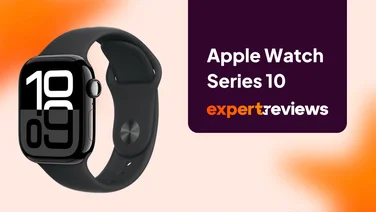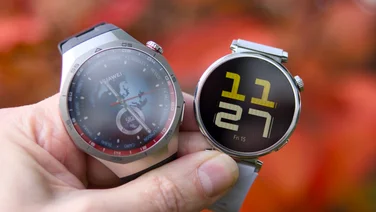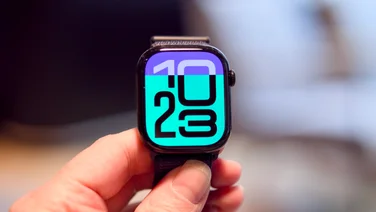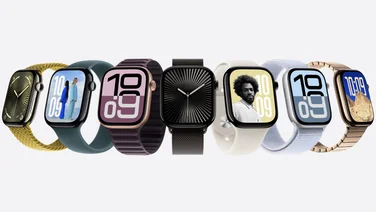To help us provide you with free impartial advice, we may earn a commission if you buy through links on our site. Learn more







- Lightweight
- Great battery life
- 24/7 heart-rate monitoring
- A little ugly
- On the pricey side
The Garmin Vivoactive 3 is following a bit of a trend this year in wearable tech, especially in the realm of fitness watches. Although it’s primarily a multisport watch like the Garmin Fenix 5 or the TomTom Adventurer, Garmin wants you to wear the Vivoactive all day, every day – and that’s why it’s added key features such as NFC payments and notification responses to the standard fitness wearable formula.
Garmin Vivoactive 3 review: What you need to know
This is a fitness wearable that you won’t want to take off when you leave the gym. You can wear it while you’re exercising, but also while you’re going about your daily activity, walking around the house, to and from the shops, and while you’re sleeping.
It can be used to track swims as well as runs, bike rides and gym sessions, plus it delivers notifications like a proper smartwatch – a job it is surprisingly good at. It’s not quite a smartwatch in the sense of an Android Wear watch or Apple Watch, because the number of apps that can be installed isn’t as broad; instead think of it as a wearable that bridges the gap between fitness devices and smartwatches.







Garmin Vivoactive 3 review: Price and competition
It’s because it sits astride a few different wearable categories that price comparison is a bit more complicated than for a fitness tracker or high-end sports watch. That’s because as well as straight multisports offerings such as the TomTom Adventurer or Spark 3 Cardio, the Garmin goes head-to-head with watches such as the Fitbit Ionic and Samsung Gear Sport and also the more serious watches from the Fenix and Forerunner ranges and the do-it-all Apple Watch Series 3.
It is more expensive than the TomTom Adventurer (around £226) and Spark 3 Cardio (£169), but those watches don’t do notifications like the Vivoactive and they’re not nearly as sleek, lightweight and comfortable.
Garmin Vivoactive 3: Design and features
One area in which the Garmin Vivoactive absolutely doesn’t convince is in its appearance. If this is Garmin trying to get all lifestyle on us, then it’s not working – the Vivoactive’s functional physique is not going to win any design awards.
The brushed stainless-steel bezel looks nice enough but the black screen surround within and plain black polycarbonate body do nothing to catch the eye. Neither does the stretchy black rubber wristband, although you can easily replace this with something nicer given the watch has a standard 20mm strap fitting.
Having said that, the Vivoactive 3 is lightweight and comfy to wear and it’s packed with practical features. The strap, for starters, has a phenomenal range of adjustment that means it’ll fit those with thick wrists and thin alike (from 107mm to 204mm in circumference, to be precise).







It’s laden with all the sensors you need for pretty much any fitness tracking task you can think of. On the rear is an optical heart-rate sensor and inside are GPS and GLONASS positional radios, a barometric altimeter, compass, accelerometer and thermometer. The watch is waterproof to 5ATM (50m) so you can take it in the pool for a swim, and the screen is topped with Gorilla Glass 3 so should be resistant to scratches and scuffs.
And, while the colours on the Vivoactive 3’s 1.2in, 240 x 240 LCD are no match for the ultra-vivid Fitbit Ionic, Apple Watch or Samsung Gear Sport, it is a sensible choice. It uses transflective LCD tech so it’s always-on, yet power-efficient because it doesn’t require a backlight to read in normal or bright sunlight. Plus, in contrast to regular OLED smartwatch displays, the brighter the sunlight gets the clearer the display.
In the dark, the screen lights up when you raise your wrist, but it is rather over-sensitive. I found it tended to activate when I wore it in bed, waking me up in the middle of the night. Fortunately, you can put the device into do not disturb mode pretty easily, although enabling an automated schedule for this is a bit of a chore; in the Garmin Connect app you have to adjust your “Sleep” time in User settings then dig into Device settings to enable do not disturb during sleep.







Still, once you’ve set it up, the Vivoactive 3 works absolutely beautifully. A button on one side performs a number of different duties depending on the screen you’re in and whether you hold it down or tap it.
There’s a touchscreen up top, which you tap and swipe to navigate through the watch’s various screens (you can control what’s shown here via the Garmin Connect app) and on the right edge of the watch is a touch-sensitive panel, which lets you scroll through menus and screens without needing to obscure the watch face with your finger. In another nice touch, it’s possible to flip the screen in settings so the button faces either left or right.
As far as smartphone features go there’s also a lot the Vivoactive 3 gets right, too. Long messages are truncated but most shorter stuff is readable in its entirety with a quick tap, whatever the messaging platform. The Vivoactive 3 adds the ability to respond using canned responses, such as “Sorry, can’t talk right now” or “In a meeting, call you later?” This is limited to incoming phone calls and SMS messages, which is a shame, but it’s at least better than what’s on offer on the Fitbit Ionic, which truncates messages much more severely and doesn’t allow you to respond at all.
The fact that there’s no on-watch music playback, however, is a bigger issue. You can view track names and control what’s playing your phone via the Vivoactive’s screen but if you want to take the watch out running sans phone, you’ll have to go music free. That’s fine by me; I can’t stand running with any kind of ear- or headphones but for some people, this will be a deal-breaker.







Garmin Pay – the Vivoactive 3’s other big new feature – is also a disappointment, at least for now. The theory is that you’ll be able to use contactless terminals to pay for things in shops and restaurants but I was unable to test it out because no UK banks or credit cards currently support the feature.
Here’s hoping this changes in the coming months. However, even without it the Garmin Vivoactive 3 is a credible smartwatch stand-in, especially as it also provides access to a decent selection of third-party apps, widgets and watch faces via the Garmin IQ Connect store.
READ NEXT: Samsung Gear Sport review
Garmin Vivoactive 3 review: Activity and fitness tracking
But you don’t buy a Garmin watch if all you want are smartwatch functions. You buy one primarily because it’s great for activity and fitness tracking and, on this front, the Vivoactive 3 is very good indeed.
First up, general activity tracking is excellent. The watch keeps tabs on your steps, floors climbed and calories burned during the day, and it continually monitors your heart rate both during the day and the night, recording your heart rate at one-second intervals. There’s also sleep tracking, which tracks your movement to indicate when you’ve been in light or deep sleep or awake during the night.
The Vivoactive 3 also supplies a stress score, reports your average resting heart rate and your estimated VO2 max – a measurement of lung capacity and, therefore, your general cardiovascular fitness levels. It can estimate your lactate threshold, a measurement that, some say, is a better way to calculate exercise zones that your maximum heart rate.







Plus, there’s a huge range of activities it can track, from the most basic (running and walking) to more specialist stuff such as swimming, golf, indoor fitness machines, skiing, snowboarding and even paddle boarding.
Most of these are tweakable on the watch itself, too. For example, select a Pool Swim and you’re prompted to select from a number of presets or set your own length. You can choose what’s displayed during the exercise and set alerts selected based on time, distance and calories burned.
There’s even more tweakability when it comes to running and other GPS-based activities, with the ability to download workouts from your training calendar, set alerts, laps, and turn on auto-pause so that your average pace or speed doesn’t tumble while you’re waiting to cross the road or stopped at traffic lights.

As for accuracy, that seems to be pretty good as far as optical wrist-based heart rate sensors go. It tracks at around the same level as the Fitbit Ionic and didn’t give me any strange readings when I and a couple of colleagues tested it out while cycling and running in London. It won’t track your heart rate while you’re swimming but you can add the capability by pairing with either an ANT+ or Bluetooth smart chest strap like the Garmin HRM+SWIM.
Likewise, the GPS worked well, tracking my position during an hour-long bike ride tightly and accurately. The only small negative point was that it did take a 30 seconds or so to lock onto a signal, particularly in built-up areas. That’s not a problem when it’s balmy and bright but during the winter months, you want to spend as little time as possible outside freezing your various bits off waiting for a GPS lock.
Battery life is superb, though, and this is where the Garmin Vivoactive 3 outdoes many of its smartwatch competitors. I found it lasted as long as six days between charges when not employing the GPS and, bearing in mind it’s tracking heart rate continually, that’s pretty impressive. With Garmin rating GPS usage at 13 hours continuous, even if you do use it to track a couple of runs a day or an hour or two of cycling, it should last three to four days at least.
Garmin Vivoactive 3 review: Verdict
In short, I’m impressed – the Garmin Vivoactive 3 really is one special fitness watch. It ticks pretty much all the boxes: it’s usable and accurate, has GPS, altimeter and heart-rate sensors, it tracks your swims on top of all the regular fitness activities – plus a few extra – and it’s a superb everyday activity tracker.
That it does all this while also packing in some degree of smartwatch capability is truly remarkable and, while it isn’t a beautiful device to look at, it achieves pretty much everything I’d want from a fitness-cum-smartwatch. The only major misfire is the lack of phone-free music playback, and frankly that won’t bother everyone – it certainly doesn’t me. If Garmin can sort out bank support for its NFC-based contactless payment system, it’ll be pretty much the perfect all-rounder.








